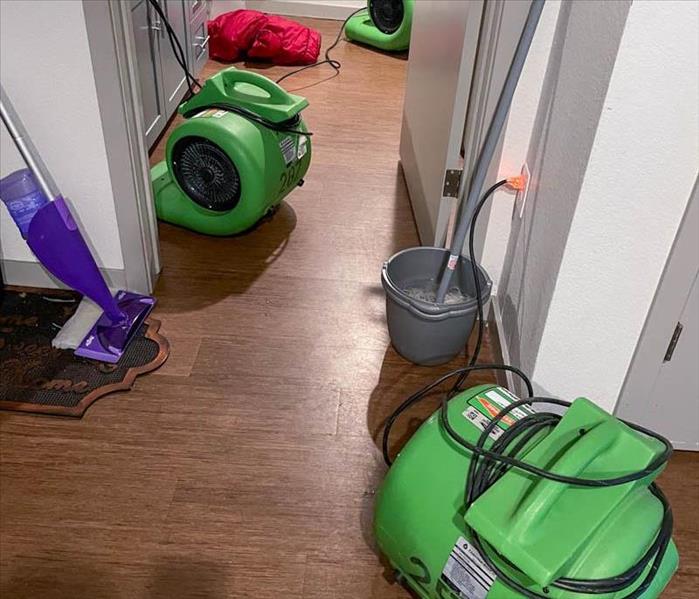How to Detect Signs of Water Damage in Your Home
10/16/2023 (Permalink)
 Being able to recognize the common signs of water damage in your home is crucial for addressing issues early and preventing serious damage.
Being able to recognize the common signs of water damage in your home is crucial for addressing issues early and preventing serious damage.
Water damage in a home can be a costly and troublesome problem. It can lead to structural damage, mold growth, and even health issues if not addressed promptly. Recognizing the signs of water damage early on is crucial to prevent further damage and mitigate the risk of long-term issues. In this blog post, we will discuss common signs of water damage in your home that you should be aware of.
Water Stains
Water stains are one of the most visible signs of water damage. Look for discolored patches on ceilings, walls, and floors, especially in areas near plumbing fixtures or where water is commonly used. These stains can range in color from yellowish-brown to dark brown and may indicate a leak or water seepage behind the surface.
If you notice a persistent musty smell in certain areas of your home, it could be a sign of hidden water damage. Mold and mildew thrive in damp conditions, and their presence can result in unpleasant odors. Pay close attention to basements, crawl spaces, bathrooms, and areas near water sources, as they are more prone to moisture-related issues.
Mold and Mildew Growth
Visible mold and mildew growth are clear indicators of excess moisture or water damage. Check for signs of mold on walls, ceilings, and around windowsills. Mold can appear in various colors, such as black, green, or white, and may appear fuzzy or discolored. Act quickly to address these issues, as mold can cause health problems and further damage to your home.
Water damage can cause paint to peel, bubble, or crack due to the moisture affecting the adhesion between the paint and the surface. Large bubbles or areas of peeling paint are often signs of trapped moisture or leaks behind the walls. If left unaddressed, this can lead to further damage, including the potential for mold growth within the walls.
Warped or Buckled Flooring
Water damage can cause flooring materials such as wood, laminate, and vinyl to warp or buckle. Look for uneven or lifted flooring, floorboards that have changed shape, or gaps between the floorboards. These issues occur when excess moisture seeps into the subfloor or affects the integrity of the flooring material.
Prolonged exposure to water can cause drywall to deteriorate or become stained. Look for visible signs of sagging, bulging, or crumbling drywall. Wet drywall may also feel soft or spongy to the touch. Staining on drywall, such as yellow or brown marks, can indicate water damage or an ongoing leak. A sudden and unexplained increase in your water bills could be a sign of a hidden water leak. Monitor your water consumption and compare your bills over time. If you notice a significant and consistent increase, it may indicate a leak in your plumbing system or water fixtures.
Being able to recognize the common signs of water damage in your home is crucial for addressing issues early and preventing further damage. If you notice water stains, musty odors, mold, and mildew growth, peeling or bubbling paint, warped flooring, deteriorating drywall, or unexplained increases in water bills, it is important to take prompt action. By addressing water damage in a timely manner, you can protect your home, preserve its integrity, and avoid costly repairs down the line.

 24/7 Emergency Service
24/7 Emergency Service